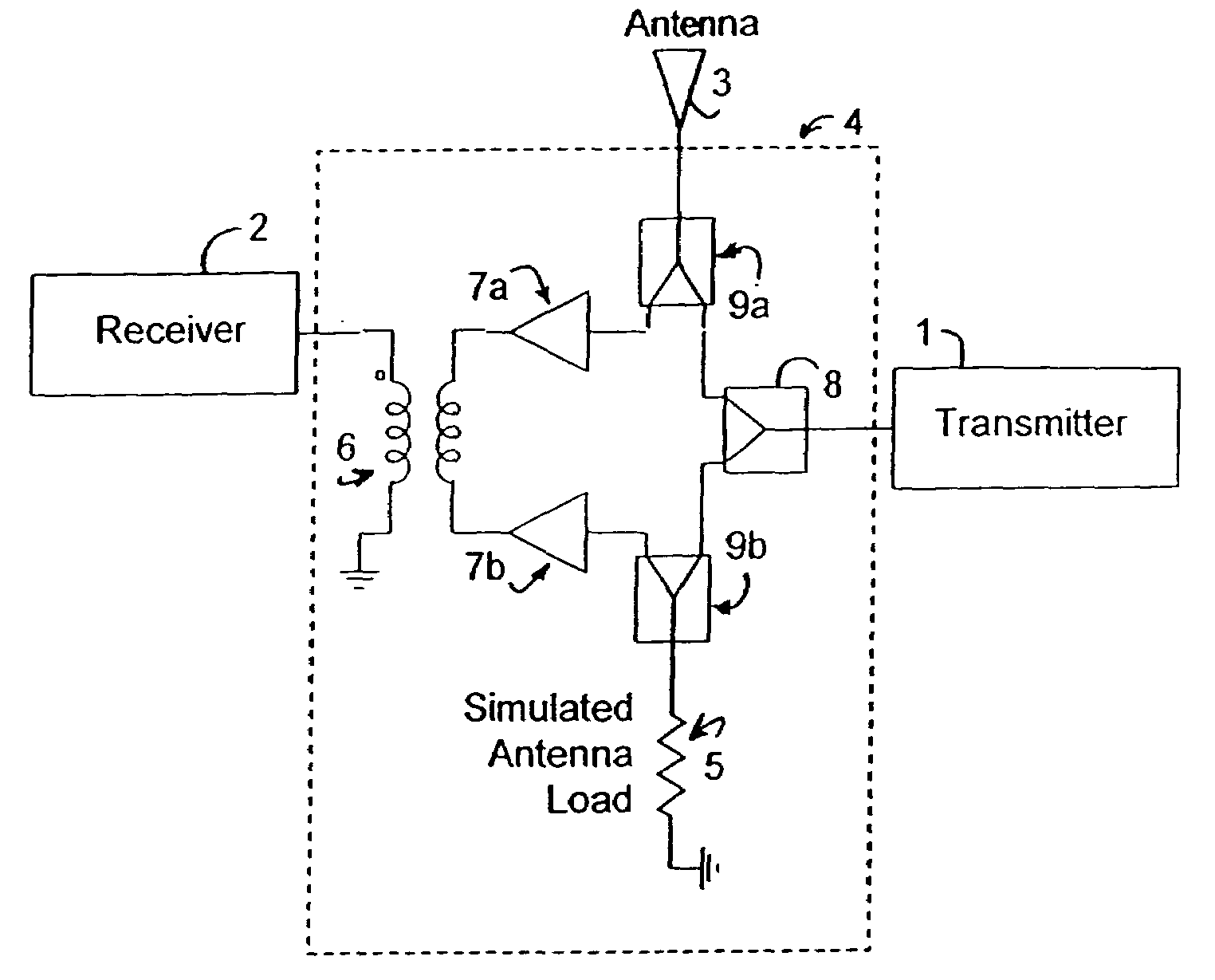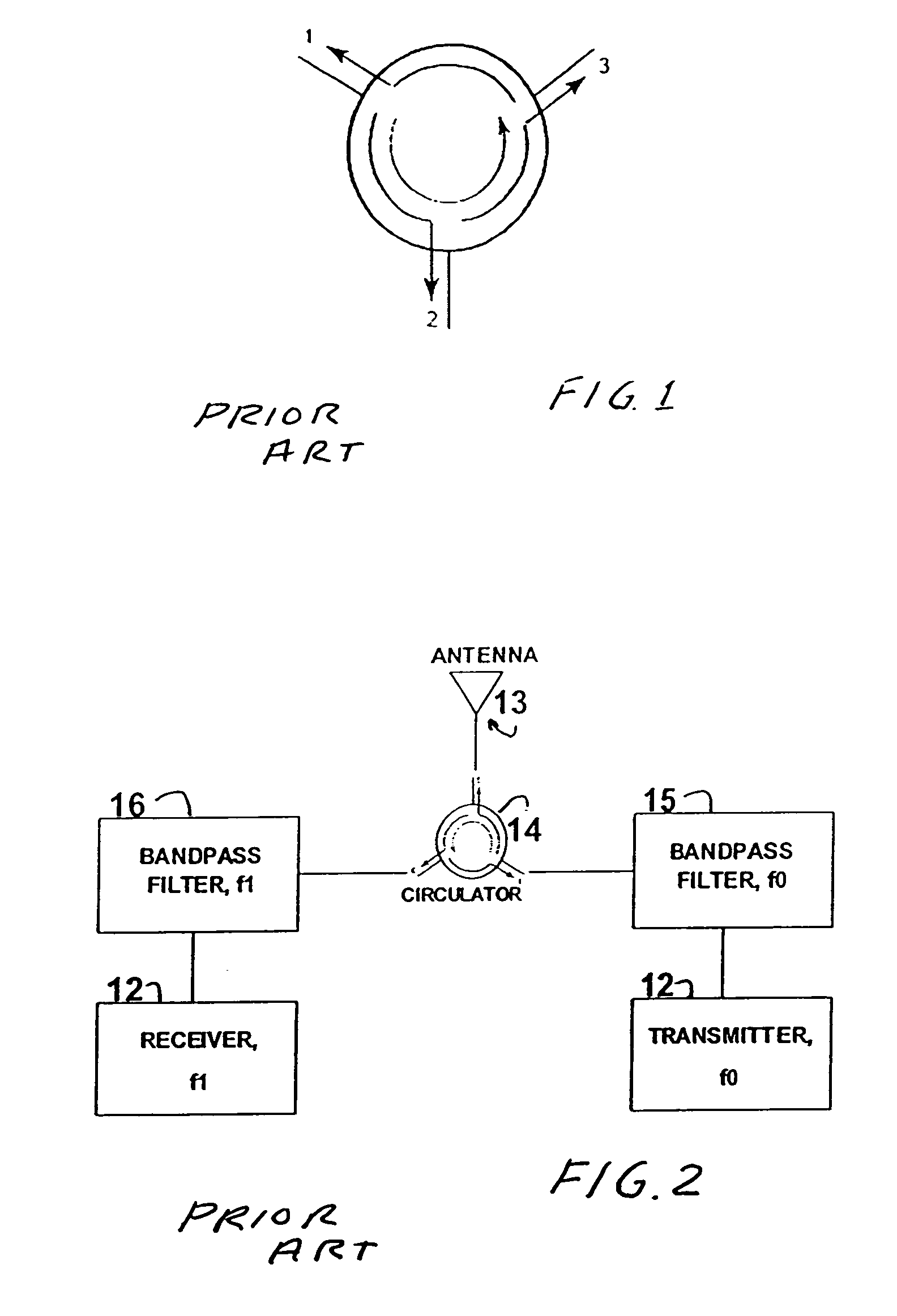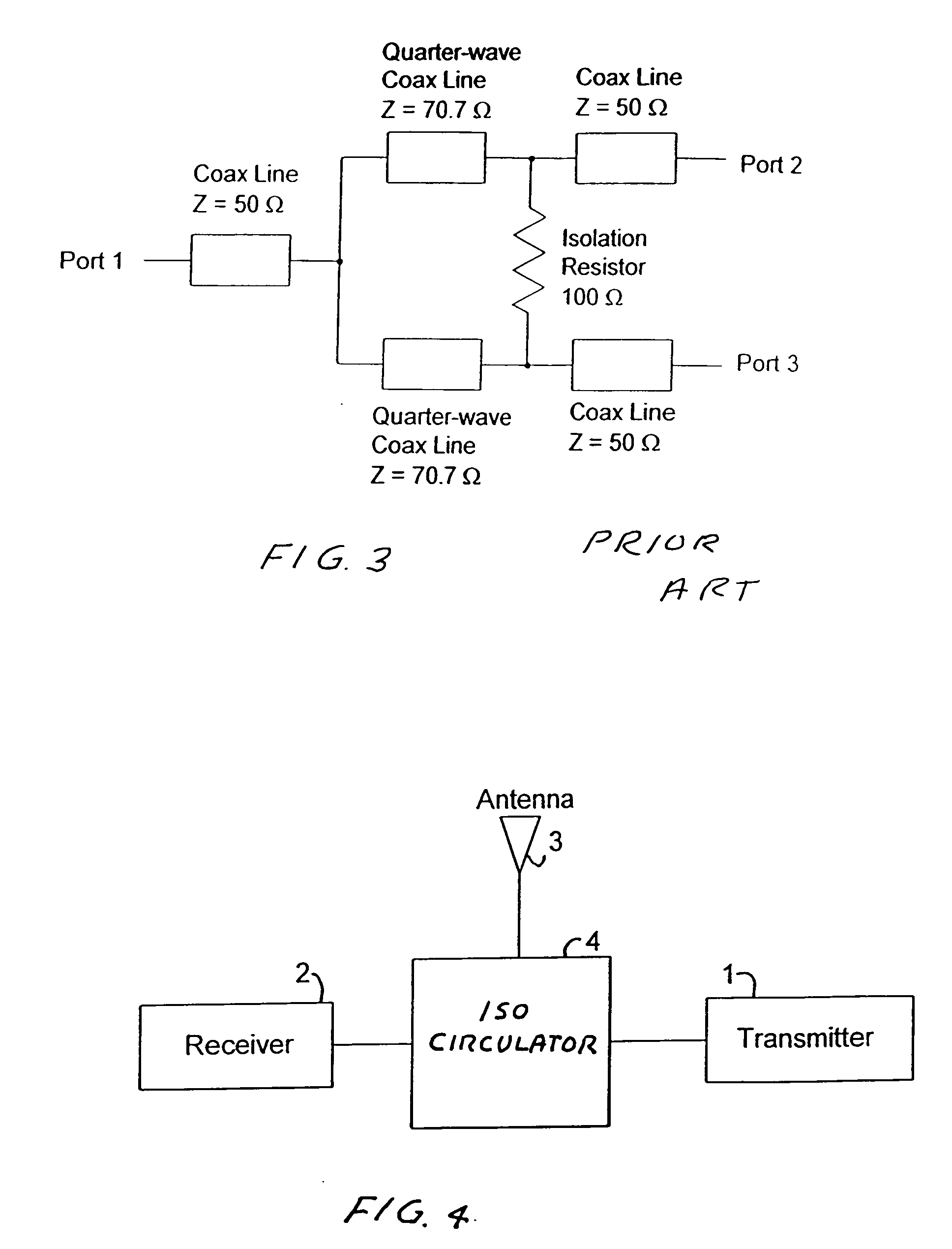Single frequency duplex radio link
a radio link and single frequency technology, applied in the field of single frequency duplex radio links, can solve the problems of limiting the useful range of the receiver and the distance over which full duplex radio communication can be carried out, and affecting the service life of the receiver
- Summary
- Abstract
- Description
- Claims
- Application Information
AI Technical Summary
Benefits of technology
Problems solved by technology
Method used
Image
Examples
Embodiment Construction
[0020]With reference to FIG. 4, the preferred embodiment of the present invention is comprised of radio transmitter 1, radio receiver 2, antenna 3, and ‘iso-circulator’4. In a preferred embodiment the radio would be configured to simultaneously transmit and receiver computer network data at 100 Mbps (each direction) in the license-free 2.4 GHz ISM (Industrial / Scentific / Medical) band. Transmitter 1 and Receiver 2 are in simultaneous operation, with transmitter 1 having a center frequency of 2435 MHz and receiver 2 having a center frequency of 2435 MHz. Different spread spectrum codes and modulation techniques for the transmitted and the received signals may be employed to further enhance the separation of the transmit and receive signals beyond the 70 dB that is achieved by iso-circulator 4.
[0021]Transmitter 1, receiver 2, and antenna 3 are available from a variety of vendors and are well know to those familiar with the industry. Iso-circulator 4 is a custom-developed design based on...
PUM
 Login to View More
Login to View More Abstract
Description
Claims
Application Information
 Login to View More
Login to View More - R&D
- Intellectual Property
- Life Sciences
- Materials
- Tech Scout
- Unparalleled Data Quality
- Higher Quality Content
- 60% Fewer Hallucinations
Browse by: Latest US Patents, China's latest patents, Technical Efficacy Thesaurus, Application Domain, Technology Topic, Popular Technical Reports.
© 2025 PatSnap. All rights reserved.Legal|Privacy policy|Modern Slavery Act Transparency Statement|Sitemap|About US| Contact US: help@patsnap.com



